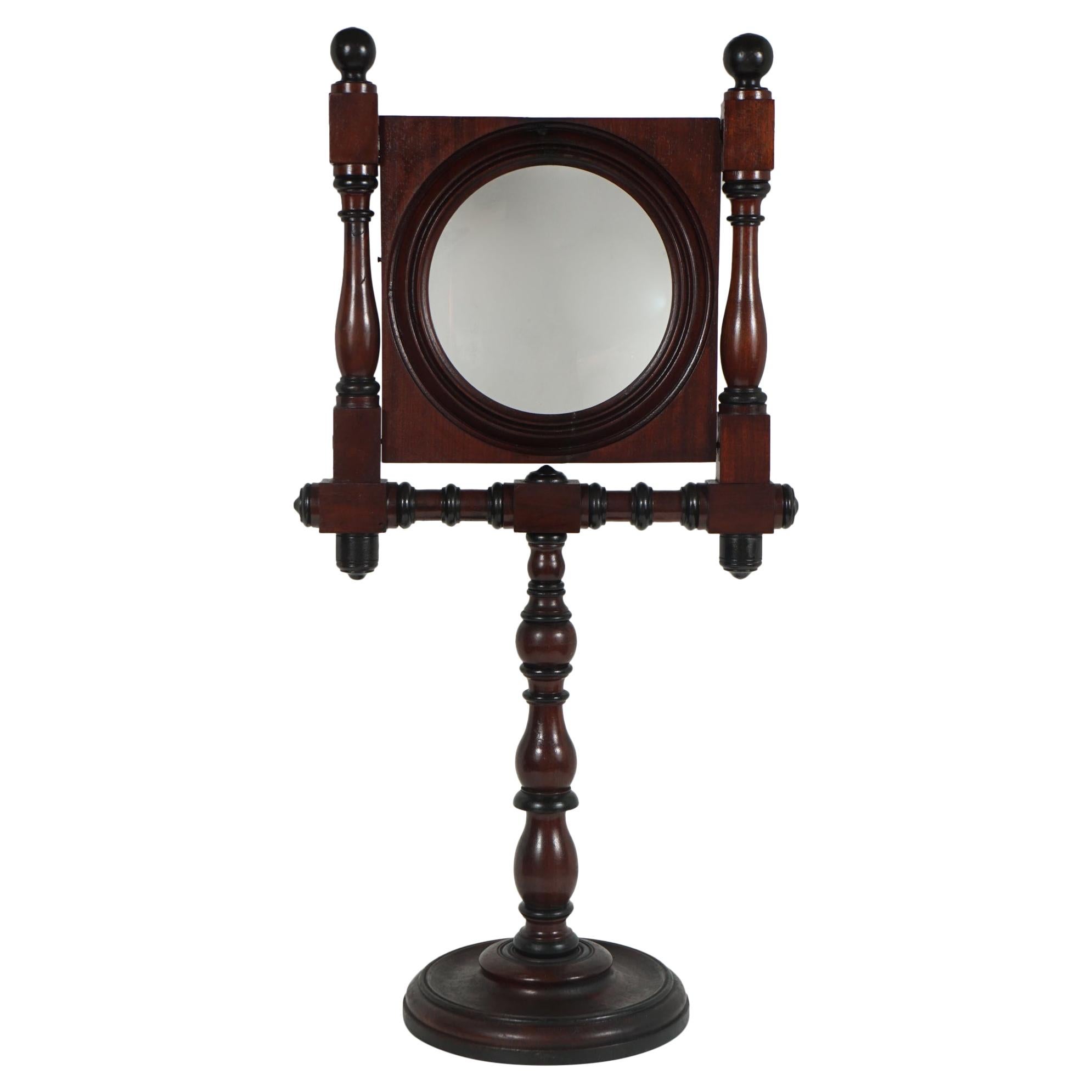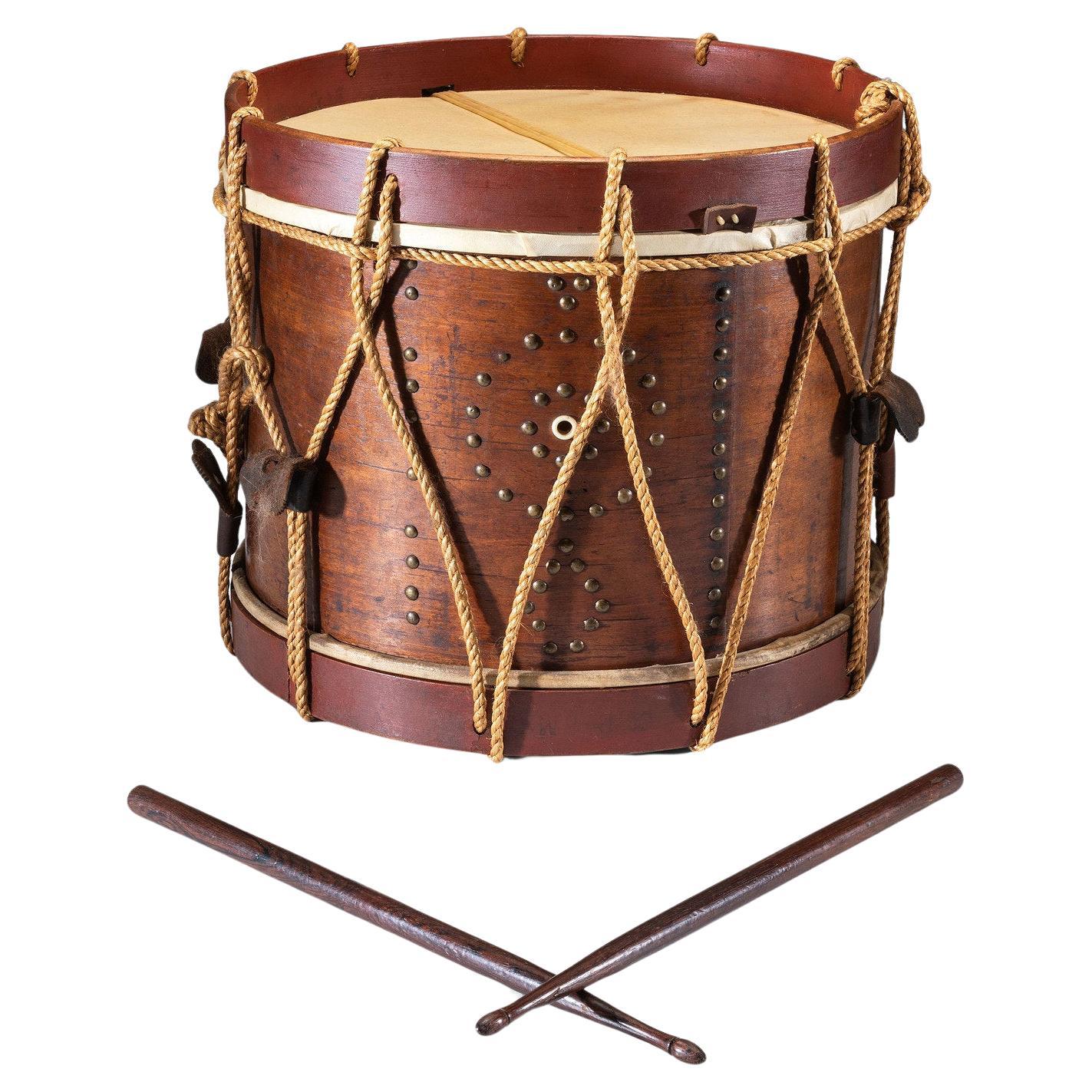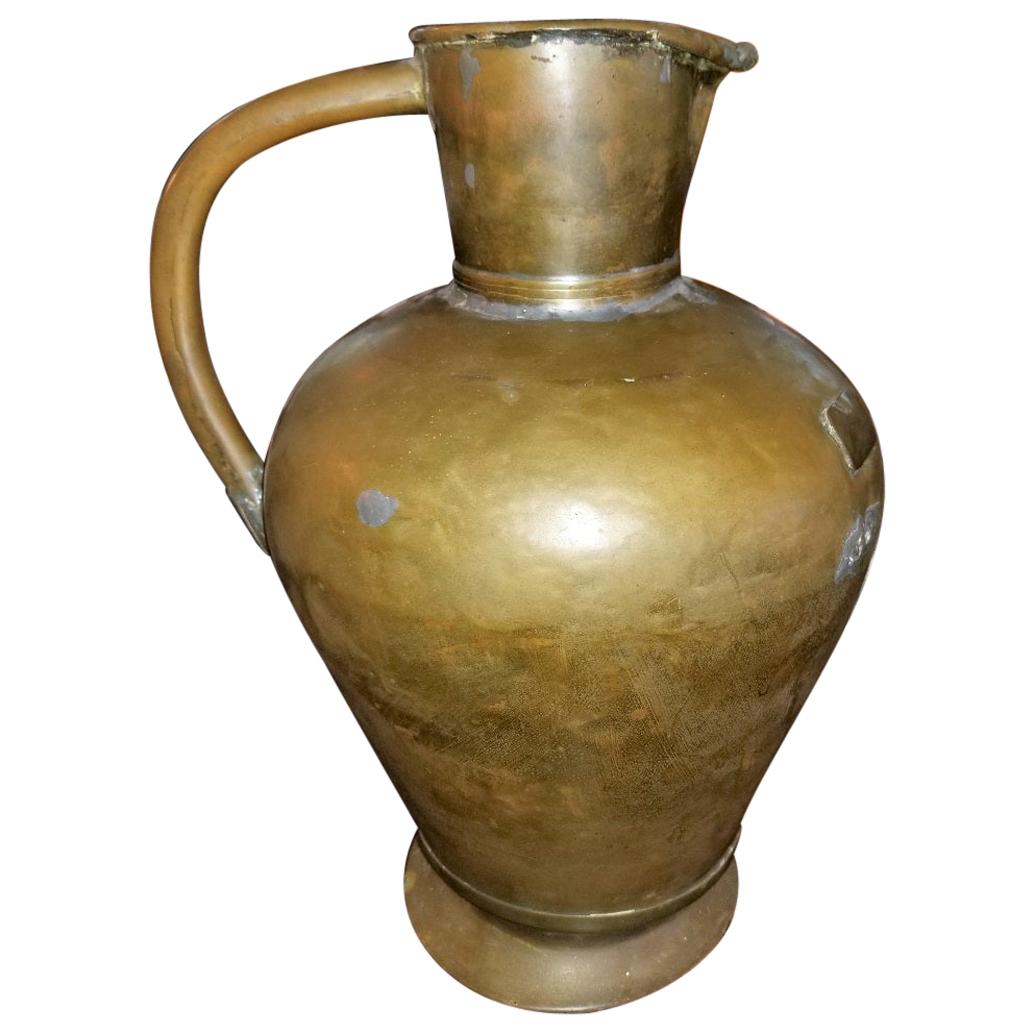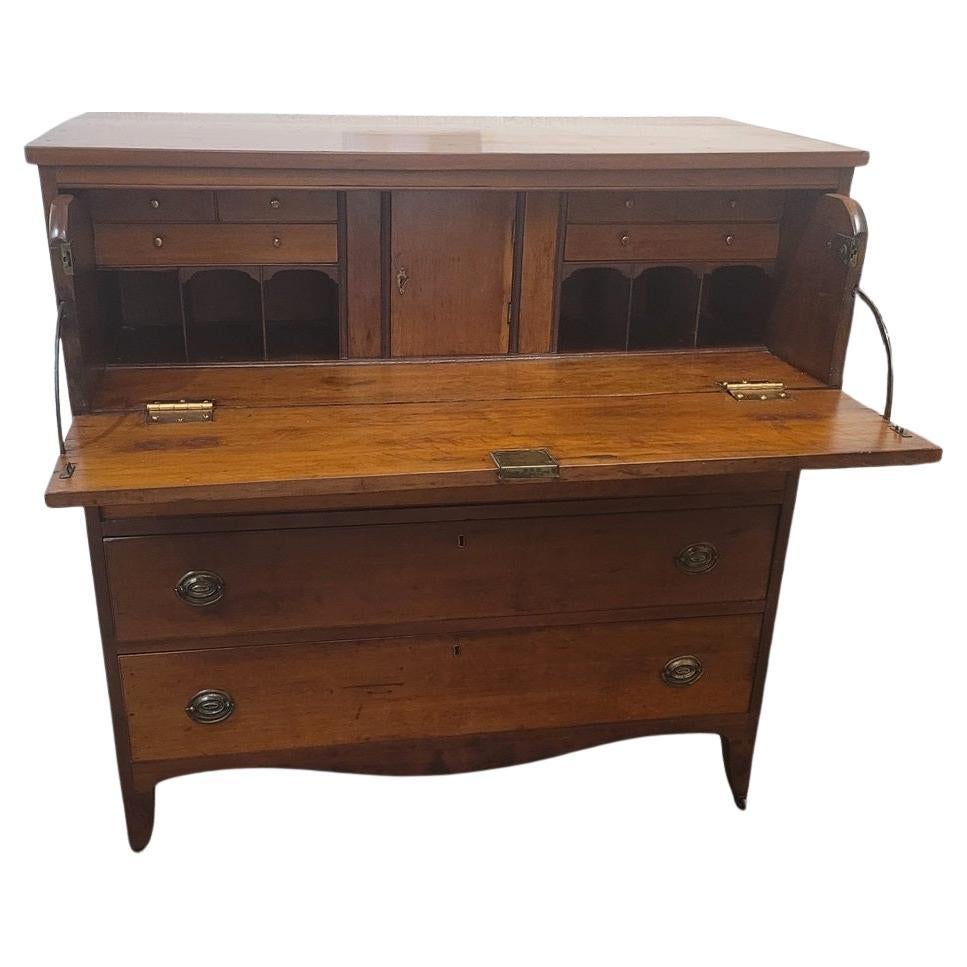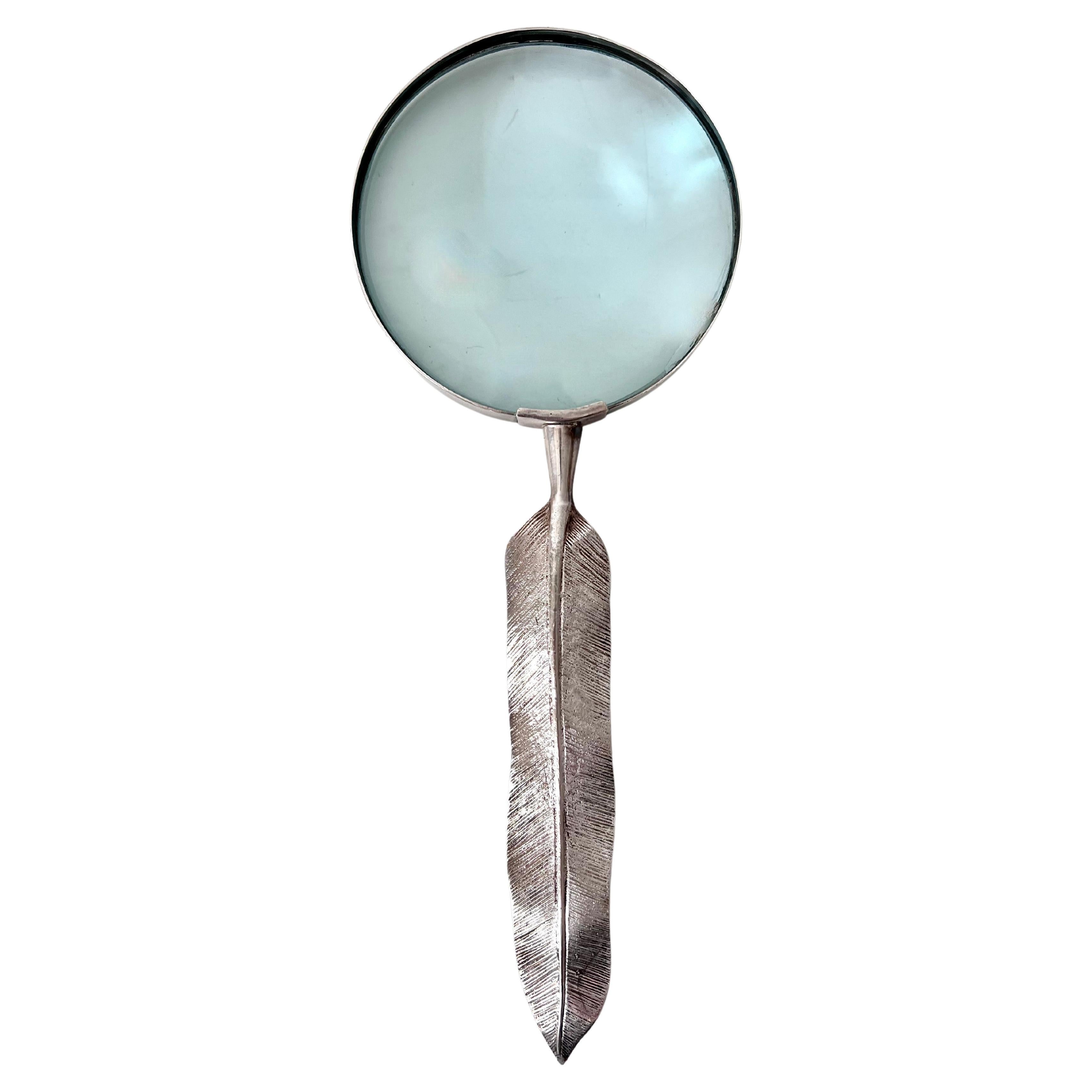Items Similar to Historical American Civil War Era Wire Frame Magnifying Eye Glass Spectacles
Want more images or videos?
Request additional images or videos from the seller
1 of 8
Historical American Civil War Era Wire Frame Magnifying Eye Glass Spectacles
About the Item
A delicate pair of handmade magnifying wire rim eye glasses from the American Civil War era, circa 1860.
A great looking historical conversation piece or decor item. Use this pair to accessorize a desk, placed on an open book in a home library, or for use as magnifiers.
Measures: 7 in. L when closed, 5.5 in. L at temples, lenses are 1.25 in. H.
Unbelievable antique condition, the expected light age related wear.
- Dimensions:Height: 1.25 in (3.18 cm)Width: 5.5 in (13.97 cm)Depth: 7 in (17.78 cm)
- Style:American Classical (Of the Period)
- Materials and Techniques:
- Place of Origin:
- Period:
- Date of Manufacture:1860
- Condition:Wear consistent with age and use. The expected light age related wear.
- Seller Location:Philadelphia, PA
- Reference Number:1stDibs: LU175829214671
About the Seller
5.0
Platinum Seller
These expertly vetted sellers are 1stDibs' most experienced sellers and are rated highest by our customers.
Established in 1988
1stDibs seller since 2015
547 sales on 1stDibs
Typical response time: <1 hour
- ShippingRetrieving quote...Ships From: Philadelphia, PA
- Return PolicyA return for this item may be initiated within 1 day of delivery.
More From This SellerView All
- Vintage Silver Plate Hand Held Magnifying GlassLocated in Philadelphia, PAA substantial, silver plated hand-held magnifying glass, circa 1980s. Perfect for the desk top or a library, this heavy magnifying has a ribbed metal handle terminating in a solid b...Category
Late 20th Century Unknown International Style Desk Sets
MaterialsMetal
- Red and Black FDR's Fala Scotty Dog American Glass Pitcher, circa 1930-1940Located in Philadelphia, PAA charming Pre midcentury pitcher, American clear glass, circa late 1930s-early 1940s. The Scotty dog glass collectible craze began when President Franklin D. Roosevelt’s Scottish Te...Category
Mid-20th Century American American Classical Pitchers
MaterialsGlass
- Red & Black FDR's Fala Scotty Dog American Glass Ice Bowl, circa 1930-1940Located in Philadelphia, PAA charming pre midcentury ice bucket or ice bowl, American clear glass, circa late 1930s-early 1940s. The Scotty dog glass collectible craze began when President Franklin D. Roosevel...Category
Mid-20th Century American American Classical Serving Pieces
MaterialsGlass
- Framed Race Horse Champions Original Chromolithographs Printed in 1882, Set /3Located in Philadelphia, PAA set of three framed original Race Horse Chromolithographs originally published in the “Illustrated Stock Doctor and Livestock Encyclopedia” in 1882. In hand-painted wood frames secured with small nails, with metal hanging rings. Captioned as follows: “Black’s Hambletonian” One of the finest and best blooded trotting stallions of the day. Property of S. Baxter Black, Compassville, Pa. Cost when a weanling colt $3500. Sired by “Rysdyk’s Hambletonion”; dam “Long Island Black Hawk” “Maud S." The Queen of the Turf. Record 2.10 1/4. The fastest trotter the world has yet known. Owned by William H. Vanderbilt Esq. who has refused a cash offer of $100.000 for her. Foaled at Woodburn Farm, Ky. March 28, 1874. Trainer and driver W.W. Bair. “Iroquois” Winner of the Derby. (Epsom Derby...Category
Antique Late 19th Century American American Classical Historical Memorab...
MaterialsWood, Paper
- 1884 Chromolithograph 'Run for the Stakes' Children's Horses Game Board, FramedBy McLoughlin BrothersLocated in Philadelphia, PAAn original lithographed childrens’ game board, titled ‘Go On or the Run for the Stakes,’ by The McLoughlin Brothers., NY, NY, copyright Jan. 1884....Category
Antique Late 19th Century American American Classical Historical Memorab...
MaterialsPaper
- Brooke Cadwallader Carnival Mid-Century Era Silk Scarf, 1947-1950Located in Philadelphia, PABrooke Cadwallader Silk Scarf, The Carnival Print – 1947-1950 Brooke Cadwallader was a well-known printed textile designer of the mid-20th century...Category
Mid-20th Century American Mid-Century Modern Historical Memorabilia
MaterialsSilk
You May Also Like
- American Victorian Walnut Cased Standing Magnifying GlassLocated in Hudson, NYThis large American Victorian standing magnifying glass is encased in a carved and turned walnut frame and is adjustable to height with a wooden screw set device. Made circa 1880 the...Category
Antique Late 19th Century American Victorian Scientific Instruments
MaterialsGlass, Walnut
- 36 Star American Flag, Civil War Era, Nevada StatehoodLocated in York County, PA36 Stars In The "Great Star" Or "Great Luminary" Pattern On A Civil War Era Flag With A Dusty Blue Canton And A Section Of One Stripe Souvenired, 1864-67, Nevada Statehood 36 star American national flag of the Civil War era, entirely hand-sewn and with some rare and beautiful features. The stars are arranged in a rendition of what is known as the Great Star or Great Luminary configuration, a large star made out of smaller stars. With no official star pattern before 1912, their design was left up to the artistic liberties of the flag-maker. Strikingly visual, the Great Star is both scarce and coveted by collectors. The 36th state, Nevada, entered the Union during the Civil War on October 31st, 1864. The last Confederate general surrendered on May 26th, 1865. The 36 star flag became official on July 4th of that year, but makers of printed flags would have begun adding a 36th star to their flags in 1864, even before the addition of the new state occurred. Lincoln pushed Nevada through just 8 days before the November election. Nevada’s wealth in silver was attractive to a nation struggling with the debts of war and increased support for the Republican ticket. The 36 star flag was replaced by the 37 star flag in 1867, with the addition of Nebraska. Adding to the flag's appeal is its small scale across those with of piece-and-sewn construction. During the 19th century, sewn flags (as opposed to those that were printed on cloth) were typically eight feet long and larger. This is because they were important in their function as signals, meaning that they needed to be seen and recognized from great distance. A flag that was six feet in length was considered small and production of flags smaller than this was extremely limited. Even infantry battle flags were approximately six by six and-one-half feet, about the size of an average quilt of the same period. As time passed, circumstances changed and sewn flags began to find more of a decorative purpose. Smaller flags are more scarce and far easier to frame and display. The Great Star configuration appears to have come about shortly after the War of 1812, when Congressman Peter Wendover of New York requested that Captain Samuel Reid, a War of 1812 naval hero, create a new design that would become the third official format of the Stars & Stripes. A recipient of the Congressional Medal of Honor, Reid became harbor master of New York following the war. During his lifetime, he created many innovations in signal use, including a system that could actually send messages from New York to New Orleans by sea in just two hours. Use as a Naval signal had been the primary reason for the initial creation of an American national flag in 1777, but since there was no official star design, the appearance of our flag varied greatly. Reid’s primary concern centered on both consistency and ease of recognition. His hope was as more and more states joined the Union and more and more stars were added to the flag, that it would remain easily identified on the open seas. In 1818, Reid suggested to Congress that the number of stripes permanently return to 13 (reduced from 15) and that the stars be grouped into the shape of one large star. Reid’s proposal would have kept the star constellation in roughly the same format, in a pattern that could be quickly identified through a spyglass as the number of states grew. His concept for the stripes was ultimately accepted, but his advice on the star pattern was rejected by President James Monroe, due to the increased cost of arranging the stars in what would become known as the “Great Star”, “Great Flower”, or “Great Luminary” pattern. Monroe probably didn’t wish to impose this cost on either the government or civilians, so he suggested a simple pattern of justified rows. Never-the-less, the Great Star was produced by anyone willing to make it and its rarity today, along with its beauty, has driven the desirability of American flags with this configuration. The canton and stripes of the flag are made of fine merino wool. Note how the canton has faded to a dusty seafoam blue, which is endearingly attractive. The stars of the flag are hand-sewn and single-appliquéd. This means that they were applied to one side of the canton, then the blue fabric was cut from behind each star, folded over, and under-hemmed, so that one star could be viewed on both sides of the flag. I always find single-appliquéd stars more interesting, not only because they are evidence of a more difficult level of seam-work and stitching, but also because they are more visually intriguing. The two visible rows of hand-stitching emphasize their hand-sewn construction, which is one reason why flags with single-appliquéd stars often appeal to connoisseurs of early American textiles...Category
Antique 1860s American Political and Patriotic Memorabilia
MaterialsWool
- Civil War-Era Side Drum, Made by George Kilbourn, 1859Located in Colorado Springs, COPresented is an original Civil War-era side drum with a pair of wooden drumsticks. This is a rope tension drum with a wooden body, ropes, and leather tabs. An iron tack pattern surro...Category
Antique 1850s American American Classical Musical Instruments
MaterialsIron
- 19th Century Large Civil War Era Bronze and Tin PitcherLocated in Dallas, TXPresenting a fabulous historic treasure of times past, namely, a 19th century large Civil War Era bronze and tin pitcher. From circa 1850, this is an American frontier piece. I...Category
Antique Mid-19th Century American American Classical Pitchers
MaterialsBrass, Bronze, Copper, Tin
- American Hepplewhite Virginian Secretary Chest with Civil War ProvenanceBy George HepplewhiteLocated in Dallas, TXPRESENTING a FANTASTIC and HISTORIC Early 19C American Hepplewhite Virginian Secretary Chest with OUTSTANDING Provenance. This Secretary Chest was made in Virginia in the Early 19th Century, circa 1810. It is made of cherry, walnut and maple and is most definitely in the Hepplewhite Style of the period, with it’s original Hepplewhite brass drawer pulls. IT IS A REALLY INTRIGUING AND HISTORIC PIECE, ESPECIALLY, WHEN VIEWED IN CONTEXT WITH IT”S AMAZING PROVENANCE! This piece was originally owned by Major William Alexander Obenchain who ‘hailed’ from the State of Virginia. He was an engineer and was in the Virginia Corps of Engineers during the Civil War and served on General Robert E. Lee’s staff. It was acquired by him before the Civil War and we believe that this piece was on campaign with him during the War. We know for a fact that he fought at the Richmond Campaign in 1864, as we have, in our Collection, his original Field Map for that Campaign which ended the War. It has remained in family ownership ever since. It has come directly from the Family Estate, together with other VERY IMPORTANT items belonging to Major Obenchain and other IMPORTANT items that belonged to his wife, Eliza Calvert Hall-Obenchain. ALL these items contained in the Collection, are listed/posted individually on our Website. The top drawer is on retractable curved side hinge supports and pulls outwards and drops to reveal a secretary and writing area. The Bureau/Secretary Gallery has 6 drawers and 6 cubbies, a central tabernacle door with another drawer and 2 cubbies and this is flanked by 2 secret pull out compartments. The central tabernacle door has it’s original key and working lock. Closed, it is almost ‘flush’ like the rest of the drawers, with some very minor bowing through age. The 3 drawers underneath are graduated in size and it ends with a serpentine shaped base and sits on four hand carved legs with original metal casters, marked ‘Universal 3’. It has it’s original brasses and hardware throughout, save the addition to 2 contemporary replacement brass hinges to the drop down desk front, as the original hinges were broken, could not be repaired and were not supporting the weight of the drop down leaf. Some minor repairs but not noticeable. Otherwise, the piece is in it’s entirely, ORIGINAL condition! What makes this piece even MORE INTRIGUING and APPEALING HISTORICALLY, are the 2 ‘historic’ circular holes on the piece:- (1) in the back of the piece as seen in the photos. This hole is not symmetrical or fully round and appears to serve no purpose to the piece whatsoever. Sometimes, pieces have holes for wiring for lighting, put in them over the years, but this one never had such lighting or, indeed, any such explanation for this hole, AND (2) the rear hole is replicated, in the corner portion of the bottom drawer and someone (a very long time ago) has used a tin can top, to cover the hole in the back of the drawer. The tin can top is period to the Civil War Era and is embossed “Minimum Volume 1 Pint”. Our conclusion, is that (whilst we are, by no means ballistic experts) that these holes were created by musket balls, fired during one of the Major’s campaigns in the Civil War. It is entirely conceivable that this piece, being strapped into a covered wagon for carriage, would have been on it’s side. We are of the opinion that both holes, were caused or created by a musket ball entered the chest trough the base and back. We also believe that ‘the Major’, used what he had at his disposal on the battlefield, namely, a tin can lid to repair the hole in the drawer. SO THIS PIECE IS A VERY SPECIAL PIECE OF US HISTORY, INDEED! NOT ONLY IS IT AN EARLY 19th CENTURY AMERICAN PIECE, WITH A CONNECTION TO THE STATE OF VIRGINIA, THE CIVIL WAR, HISTORIC & IMPORTANT FIGURES IN THAT WAR AND IMPECCABLE PROVENANCE AND HISTORY! IT IS TRULY UNIQUE! William Alexander Obenchain. Born April 27, 1841 at Buchanan, Botetourt Co., Virginia. Parents: Thomas Jefferson Obenchain and Elizabeth Ann Sweetland. Entered VMI on July 18, 1859 as a member of the VMI (Virginia Military Institute...Category
Antique Early 19th Century American American Classical Historical Memora...
MaterialsBrass
- Silver Magnifying Glass with a Feather Handle Letter OpenerLocated in Los Angeles, CAA very nice silver magnifying glass with a feather handle, which could be used for opening letters as well. The magnification is good and works well. A compliment to any desk or work...Category
20th Century Modern Letter Openers
MaterialsSilver
